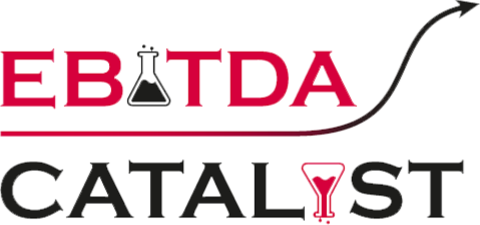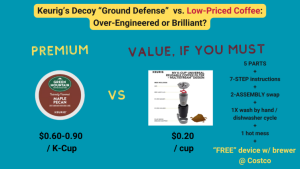Grocery Shoppers Pay for Niceties, Not Just Groceries
Few people realize that when they pay for a basket of groceries, at most leading grocery stores they’re paying for a “bundle.” As in, not just a bunch of food items they will take to their families, but a fair few extra niceties that are “included” in the experience. It turns out, they are “included” for a cost (no such thing as a free lunch). By including much fewer (or none) of those, Aldi, the German-based global supermarket chain, is able to reveal how much shoppers may have been paying for the “niceties” all along, and to give them an option to say “no thank you.”
(For a review of bundling as a pricing strategy, see this HubSpot blog)
In a previous feature post, we compared Aldi prices with Cub Foods prices and Walmart prices, and found Aldi dramatically price-advantaged versus “traditional grocery chains” (e.g. Cub Foods), and highly competitive with the ultimate every day low price (EDLP) and top grocery seller on the planet, Walmart. Consumers shopping at “traditional” chains like Cub Foods, Safeway, or Kroger, may pay 50-70% more for a basket of groceries. Since this dwarfs even the significant inflation hit consumers saw across the grocery space, shoppers have a choice. Those complaining of the high inflation but still shopping at “all niceties included” stores are unfortunately paying up for a choice they may not realize they’re making!
Did you know Aldi is now the fastest-growing grocery chain in America by store count and square footage? It has leapfrogged Albertson’s and other incumbents and sits now 3rd behind only Walmart and Kroger by store count (it is still ranked further down by $ sales because its stores are smaller, as explained below, but moving up rapidly).
What's Included In Your Grocery Prices?
- Store hours mirror peak shopping hours ( 9am-8pm daily, no “we’re open very late for your convenience” here! … compare to Whole Foods 8am-10pm daily, or some Walmart, Kroger, Cub Foods 24/7)
- Their stores are smaller & stock a more limited assortment aimed at frequently needed groceries, with a much smaller focus on niche needs & products. This results in dramatic cost savings, passed to consumers, from economies of scale in supply chain and efficient distribution, a-la Costco. (See our article on Costco’s brilliant use of price signaling to court bargain shoppers).
- The majority of SKUs are private label (shoppers don’t pay for the comfort, but also additional marketing spend, of global brands)
- Extra packaging is kept to a minimum (no seductive bells and whistles that shoppers, and sometimes the environment, end up paying for)
- You return your own cart and bring / buy your own bag (again, few cents here and there add up, and there is signaling power here in who is Aldi’s ideal customer … somebody willing to accept not everything in life is “included”)
- They limit produce and other perishables (this can be a contentious decision, but Aldi is okay with other chains serving the shopper segment that demands a wide assortment of high-quality produce with all the associated costs)
- The stock in inventory is exceptionally tightly managed to avoid overstock / extra inventory expense (if one shops near closing on a Sat or Sun, some most popular items, particularly perishable meat / seafood, may be out of stock). Again, Aldi bets that one item on your shopping list being out of stock once in a blue moon is a trade you’re willing to accept to pay less on the other 29 items on your list
- Shelves and shelf stocking are optimized & containers standardized to keep costs (including shelving labor) low, not for aesthetic value
- The store staff is limited, versatile to perform multiple roles, and you virtually never see unoccupied store employees just waiting for something to do (this does mean that if you need help, you need to find and ask one of the few employees present, and there is no “Customer Service Desk”
Note: We are taking some license calling this “unbundling”, as in pure pricing terminology “unbundling” would suggest these features are still available for an additional charge … in reality Aldi simply gets rid of them, and strategically foregoes shoppers who value them enough to pay extra, to its competitors.
Aldi's Strengths Play to the Inflation-Battered U.S. Consumer ... Who's Willing to Do Without the Niceties
In America in particular, shoppers had been taking for granted many such niceties, not unlike the airline industry, where a meal, reserved seats, and free checked bags used to be the universal default. No longer. Like Southwest Airlines & RyanAir disrupted the airline industry in lasting fashion, Aldi sees its opportunity to take costs out for consumers willing to trade off niceties for savings. As explained in our note above, arguably Aldi’s is an even more dramatic bet on “savings over bells and whistles”, in the sense that it does not even offer the option to pay extra and still get the niceties as add-ons (the clever exception, notably, is letting you get your own cart and bags, for an extra quarter or dime). As history has proven, Southwest and other low-cost airlines had profound and lasting impact on their industry, with the incumbent “majors” Delta, American, United & British Airways adapting to start offering their own “economy” fares. (See our article on Delta’s clever handling of its economy fare option here). It is far less obvious to see how the grocery giants Walmart, Kroger and beyond will pare Aldi’s growth … but they can never be counted out, especially Walmart whose grocery shopper overlaps heavily with Aldi’s, and leaves additional dollars in the store beyond grocery. In the meantime, for any of the incremental costs baked into the grocery shopping experience that Aldi has cut out, at other stores someone has to pay not just the costs themselves, but a profit margin for the grocery chain on top of them (as our white paper on inflation and price increases explains).
Conclusion
Aldi is the obvious answer to an increasingly clear reality: a large swath of American families could do with little less spending on “discretionary” items amidst decades-high inflation that is stretching their budgets and forcing tougher choices. When given a choice between getting fewer groceries, or getting fewer niceties on top of their groceries, price sensitive Americans are increasingly voting with their feet: they go to Aldi.





